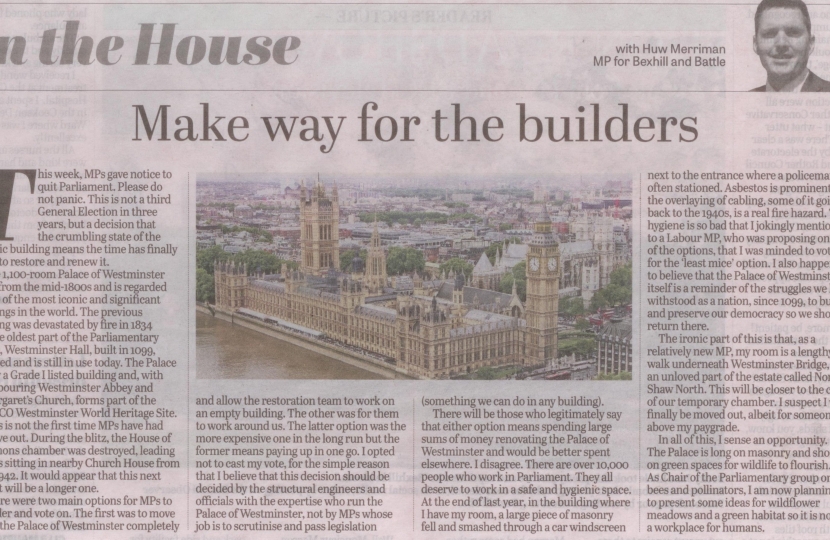
This week, MPs gave notice to quit Parliament. Please do not panic. This is not a third General Election in three years, but a decision that the crumbling state of the historic building means the time has finally come to restore and renew it.
The 1,100-room Palace of Westminster dates from the mid-1800s and is regarded as one of the most iconic and significant buildings in the world. The previous building was devastated by fire in 1834 but the oldest part of the Parliamentary Estate, Westminster Hall, built in 1099, survived and is still in use today. The Palace is now a Grade I listed building and, with neighbouring Westminster Abbey and St Margaret’s Church, forms part of the UNESCO Westminster World Heritage Site.
This is not the first time MPs have had to move out. During the blitz, the House of Commons chamber was destroyed, leading to MPs sitting in nearby Church House from 1941-1942. It would appear that this next decant will be a longer one.
There were two main options for MPs to consider and vote on. The first was to move out of the Palace of Westminster completely and allow the restoration team to work on an empty building. The other was for them to work around us. The latter option was the more expensive one in the long run but the former means paying up in one go. I opted not to cast my vote, for the simple reason that I believe that this decision should be decided by the structural engineers and officials with the expertise who run the Palace of Westminster, not by MPs whose job is to scrutinise and pass legislation (something we can do in any building).
There will be those who legitimately say that either option means spending large sums of money renovating the Palace of Westminster and would be better spent elsewhere. I disagree. There are over 10,000 people who work in Parliament. They all deserve to work in a safe and hygienic space. At the end of last year, in the building where I have my room, a large piece of masonry fell and smashed through a car windscreen next to the entrance where a policeman is often stationed. Asbestos is prominent and the overlaying of cabling, some of it going back to the 1940s, is a real fire hazard. The hygiene is so bad that I jokingly mentioned to a Labour MP, who was proposing one of the options, that I was minded to vote for the 'least mice' option. I also happen to believe that the Palace of Westminster itself is a reminder of the struggles we have withstood as a nation, since 1099, to build and preserve our democracy so we should return there.
The ironic part of this is that, as a relatively new MP, my room is a lengthy walk underneath Westminster Bridge, to an unloved part of the estate called Norman Shaw North. This will be closer to the centre of our temporary chamber. I suspect I will finally be moved out, albeit for someone above my paygrade.
In all of this, I sense an opportunity. The Palace is long on masonry and short on green spaces for wildlife to flourish. As Chair of the Parliamentary group on bees and pollinators, I am now planning to present some ideas for wildflower meadows and a green habitat so it is not just a workplace for humans.


